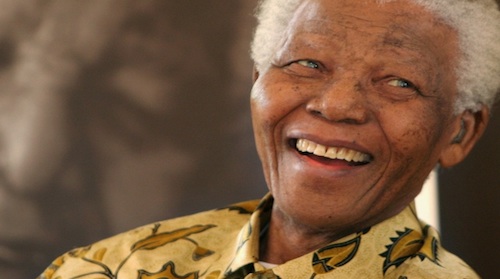By By Louis Freedberg,
As a teenager growing up in Cape Town in the 1960s, a favorite weekend activity was climbing to the top of Table Mountain, the glorious promontory at the end of the African continent.
From there it was impossible to avoid seeing Robben Island, the flat mile-long smudge where Nelson Mandela and other political prisoners had been incarcerated just a few years earlier.
I left South Africa as an 18-year-old to attend college in the United States, but returned frequently in the 1980s as a journalist — usually surreptitiously — to cover the anti-apartheid struggle. By the late 1980s, the government had caught up with me and I couldn’t return. I was still barred from the country on that luminescent February day in 1990 when Mandela was released. Instead of being in Cape Town, I watched his release on television with other South African exiles in the hills overlooking the San Francisco Bay.
It was a sight I had only imagined in my dreams. Could it really be that he had been resurrected, to lead his people — us — into the Promised Land?
It took a few more months, and intervention on my behalf by the congressman who headed the House Subcommittee on Africa, before the apartheid government agreed to give me a visa. “But,” a consular official told me, “We are doing so reluctantly.”
A week later, in May 1990, I saw Mandela in person for the first time at the opening of the first official negotiations between the ANC and the government held at Groote Schuur, the mansion that housed generations of white prime ministers and presidents. My emotions were multi-layered – enormous pride to see Mandela and other former political prisoners and newly returned exiles standing tall and free, along with a sense of vindication at having been on the right side of history, and also a tinge of anger at the wasted years. Just being in Mandela’s presence had a calming effect.
At the press conference the next day, a journalist asked President F.W. De Klerk whether he could imagine a black person ever being president of South Africa. In that room, with a freed Nelson Mandela sitting beside him, that was still a radical notion.
De Klerk paused, and then said, “I have embarked on this road, and I will follow it in whatever direction it takes us.” At that moment I realized that the chain of events De Klerk had unleashed were not just a delaying tactic, but that he was serious about embracing fundamental change.
Then an American journalist sitting next to me asked Mandela whether he thought apartheid was dead or dying. “I am 71 years old,” he replied. “I have never voted in the country of my birth. You tell me if apartheid is dead or dying.”
His opportunity to vote came almost exactly four years later. Early in the morning on April 27, 1994, I gathered with other journalists in a village just outside Durban waiting for him to do so. Suddenly he was standing next to us. We shook hands, and I congratulated him on his imminent victory. A journalist asked him who he was going to vote for. “I have been agonizing over that for some time,” he said, with a mischievous smile. “When I decide it will be a secret.” We then walked with Mandela to the gravestone of the ANC’s first president, Rev. John Dube, who died a half century earlier. His epitaph read, “Out of the darkness into the glorious light.”
A few minutes later I stood within a few feet of Mandela when he voted, signaling the decisive end of more than 300 years of racial rule. It was a transcendent moment not only in the history of South Africa, but in my own life.
Ten days later, I saw Mandela inaugurated as President at the Union Buildings in Pretoria, for decades the heart of the apartheid state. The most moving moment was when jets from the South African Defense Force – the same force that had tried to eliminate the ANC– flew overhead,, the colors of the new flag streaming from their engines behind them.
The last time I saw Mandela was in 1999 in his last appearance in the Parliament in Cape Town as president. “Things that were unimaginable a few years ago have become everyday reality and of this we must be proud,” he said, stating the obvious.
But in his typically modest way, he downplayed his role, “I have noted with deep gratitude the generous praise that has often been given to me as an individual,” he said. “But let me state this, to the extent that I have been able to achieve anything, I know that this is because I am the product of the people of South Africa.”
I too am a product of South Africa. I have been profoundly blessed by having met one the great figures in world history and seen him in action. I have been infused by the dominant but simple lesson to be drawn from his life: that change is possible, regardless of how long it takes, and how bleak the current situation may seem.
We live in a world impoverished by its lack of heroes. I can only imagine how the lives of young people would be transformed, as mine was, if they too could grow up in the shadow of someone of even a fraction of Mandela’s stature.
The miracle is that unlike Rev. Dube and other freedom fighters, in South Africa and around the world, Mandela did not have to go to heaven to experience liberation.
Out of the darkness into the glorious light.
Louis Freedberg, a correspondent for Pacific News Service in South Africa in the 1980s, is executive director of EdSource where a longer version of the above essay appeared.















